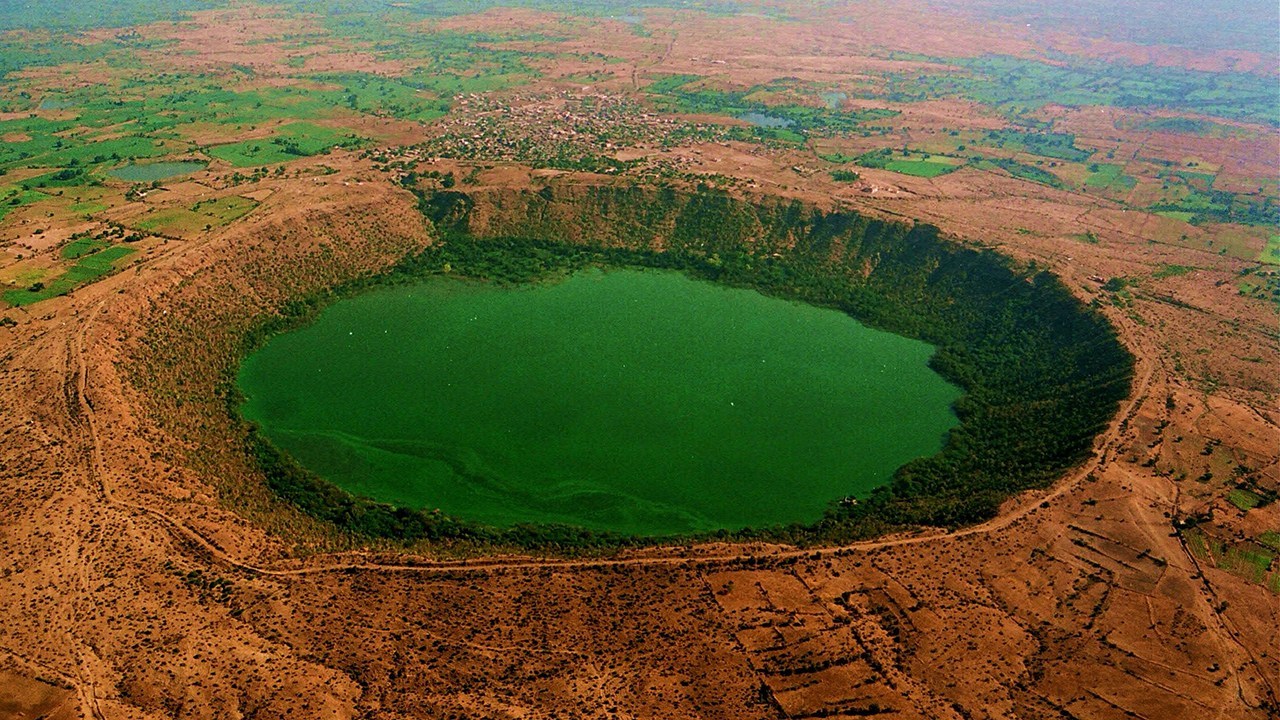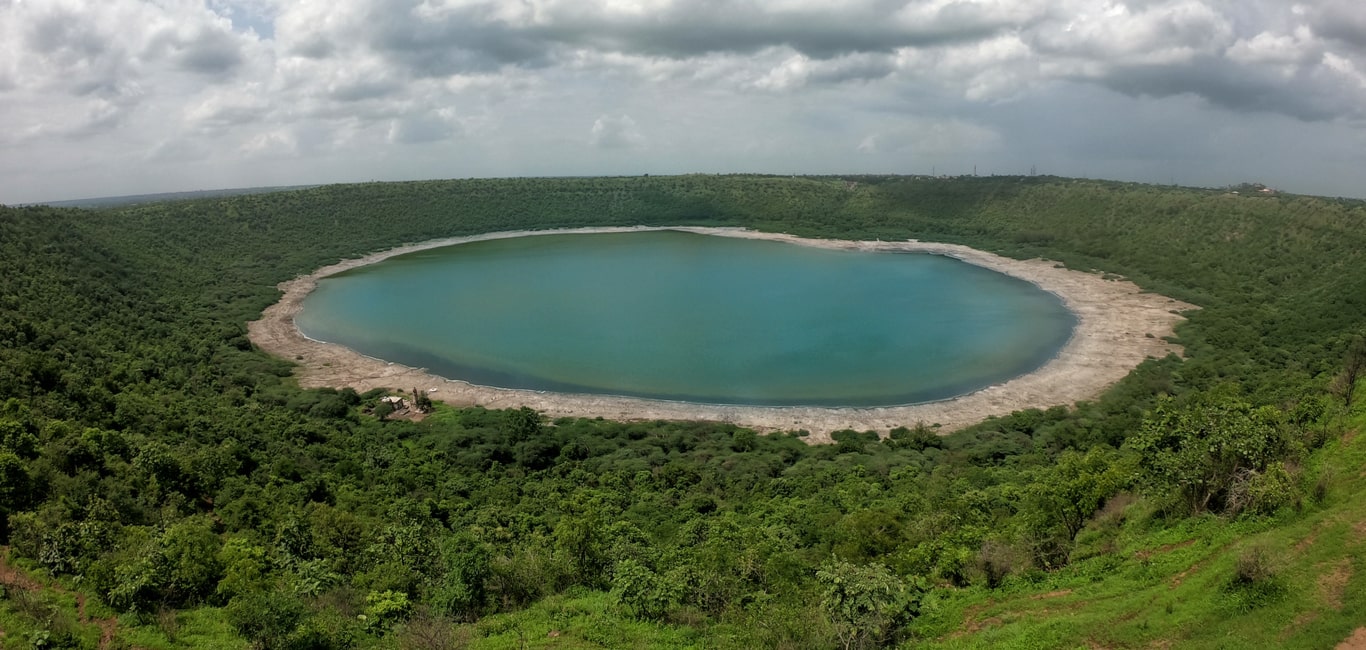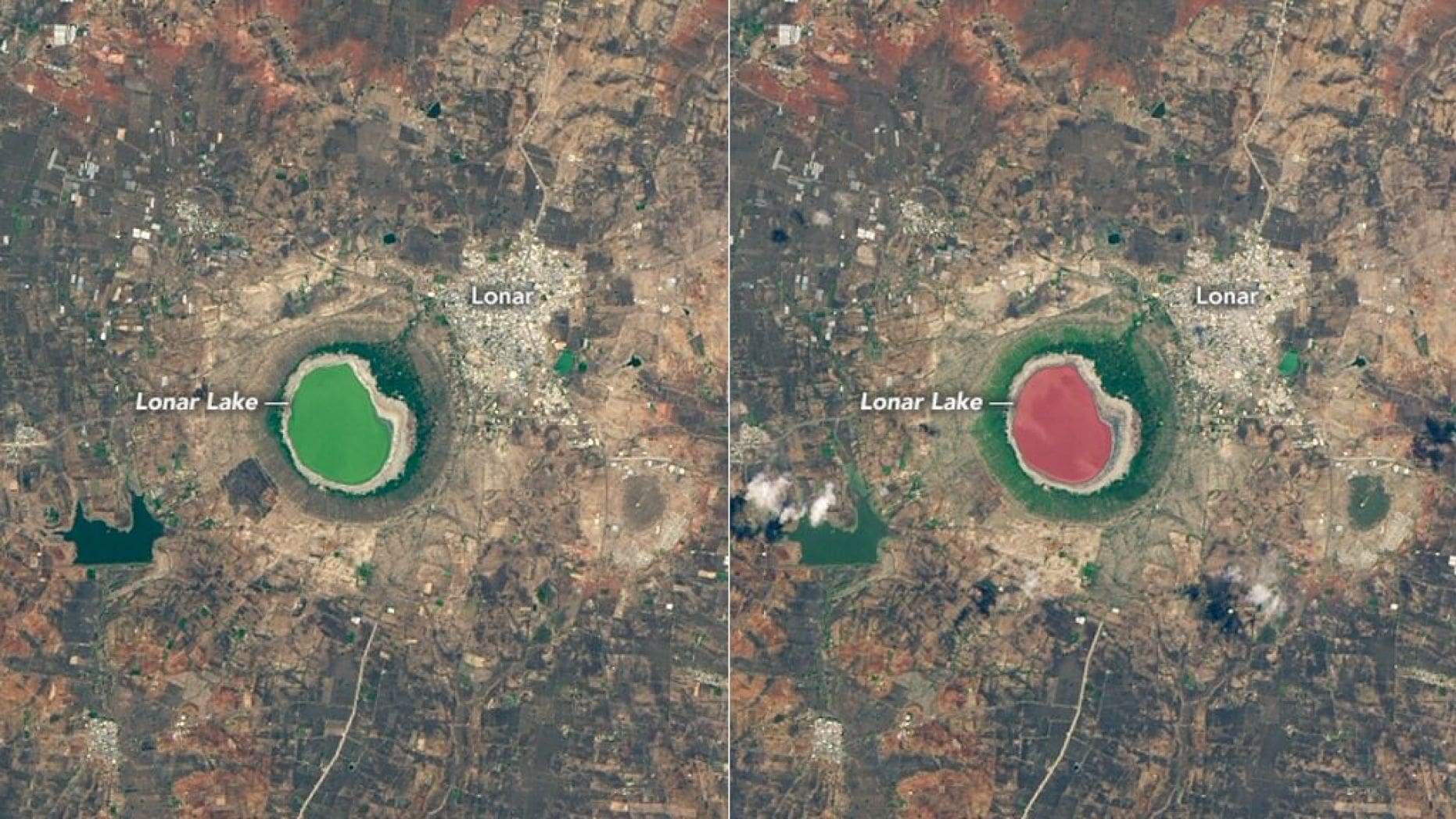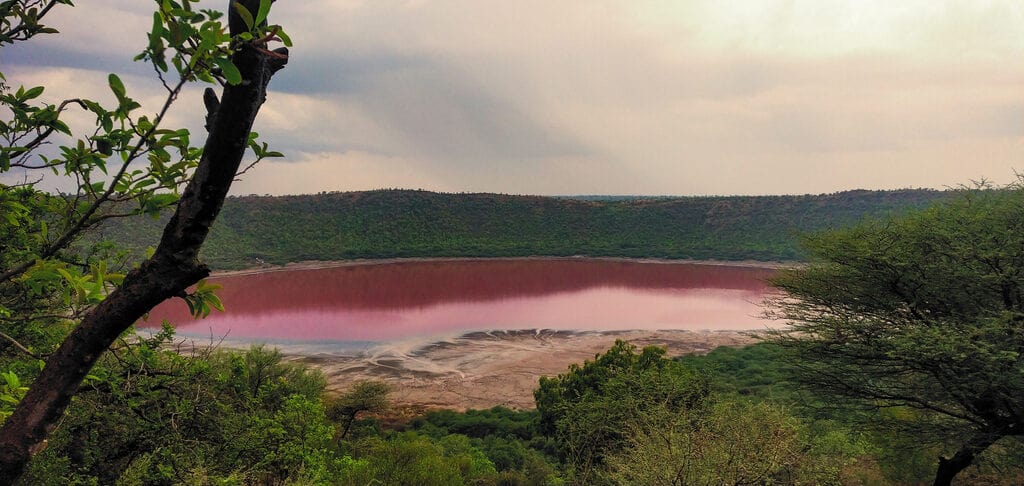
A crater lake in west-central India quickly changed from green to pink, and experts believe salinity and algae are the reasons. NASA revealed through photographs how the waters of Lake Lonar went from green to pink in just a matter of days. For now, the reason why remains a mystery.
According to the Indian site Economic Times, the change in the color of the lake water can be linked to a multiplicity of reasons. It can be the increase in salinity, the presence of algae, bacteria, or a combination of several factors. In addition, due to the dry climate that this region suffers, the body of water has decreased in depth.
The appearance of a reddish color in natural environments has happened several times in different parts of the world. In November 2018 in a small lagoon in the province of Cuenca, Spain was dyed magenta, justified by an increase in bacterial microorganisms. On the other hand, in 2013 Utah’s Great Salt Lake, the same occurred, but the effect was attributed to the increased salinity of the water.

Lake Lonar is located in the state of Maharashtra, in central-western India, and is the third-largest lake formed in the crater caused by a meteorite, confirmed by the presence of maskelynite, a natural glass that only appears with extremely high-speed impacts. The Lonar crater was created by a meteorite about 200-feet (60 meters) in diameter between 35,000 and 50,000 years ago and it is one of the most important tourist attractions in the state of Maharashtra due to its peculiar formation.
From the Twitter account of the Maharashtra state tourism directorate, geologist Gajanan Kharat indicated that although the lake had already changed its color on previous occasions, it had never happened so clearly.
“This year, it looks particularly red because the salinity of the water has increased. The amount of liquid has been reduced and the lake has become shallower, so the salinity and caused certain internal changes.”
– Said Gajanan Kharat.

Experts note that Lake Lonar is a highly alkaline body of water with high salinity, and its chemistry supports the growth of a family of bacteria known as halobacteriaceae. These organisms thrive in highly saline conditions, and some produce a red pigment called bacteriorhodopsin that absorbs sunlight and converts it into energy. When halobacteria bloom in large numbers, the water in which they are found can take on a reddish hue.
It also points to excessive algal bloom or human effect due to the low influx of people on-site due to confinement by the coronavirus.
“Season-wise changes occur in water and this might be case with the Lonar lake. We can examine the change if we go there in a week…then we can say more about the change.”
– Explained Dr. Madan Suryavashi, head of the geography department of Aurangabad’s Dr Babasaheb Ambedkar Marathwada university.
